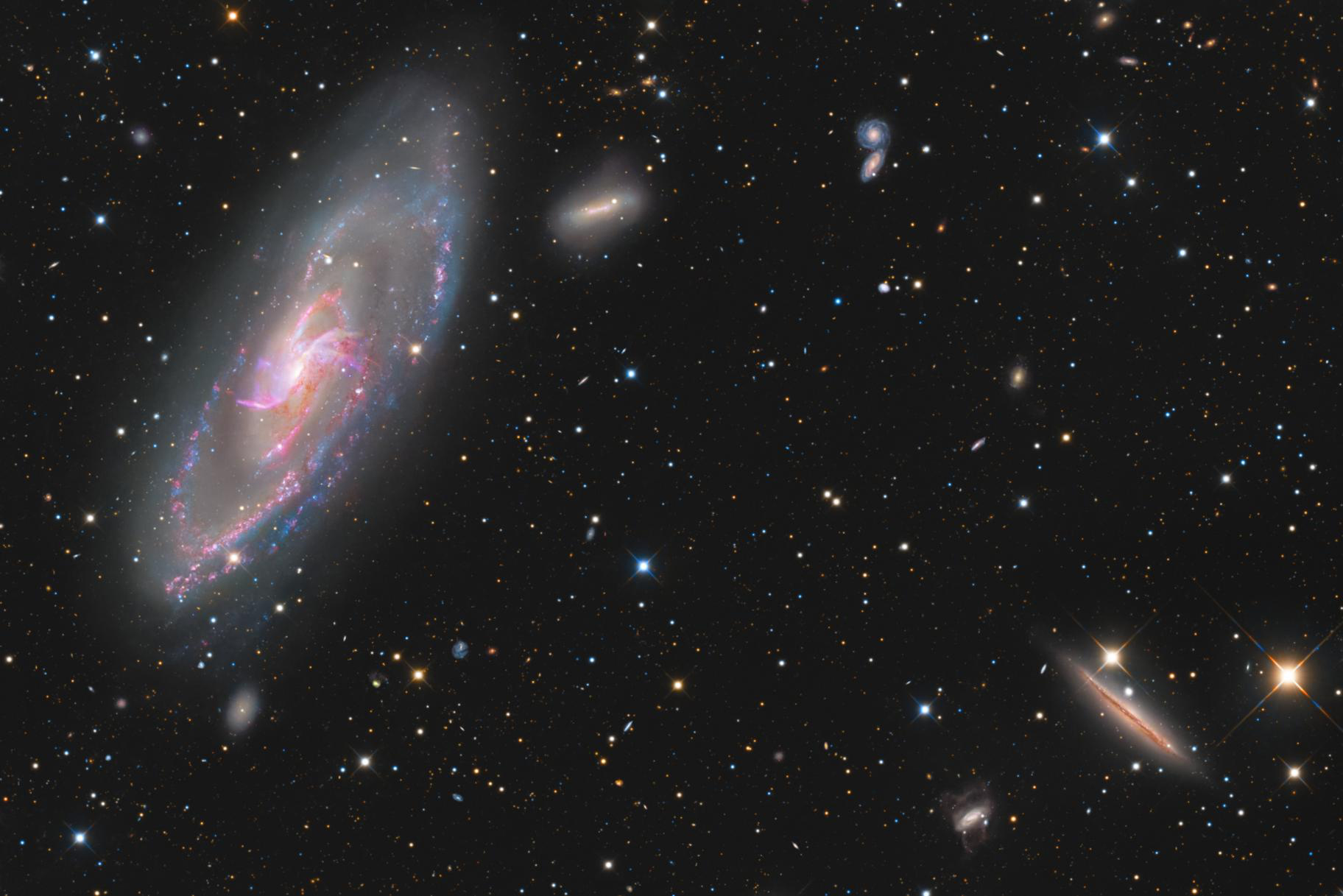Messier 106 (M106), also known as NGC 4258, is a spiral galaxy – like our own Milky Way -- located in the constellation Canes Venatici. It lies at a distance of roughly 23 million light-years and spans some 135,000 light-years in diameter.
This galaxy is famous, however, for something that our Galaxy doesn’t have – two extra spiral arms that glow in X-ray, optical, and radio light. These features, called anomalous arms, are not aligned with the plane of the galaxy, but instead intersect with it. The X-ray image from Chandra reveals huge bubbles of hot gas above and below the plane of the galaxy. These bubbles indicate that much of the gas that was originally in the disk of the galaxy has been heated to millions of degrees and ejected into the outer regions by the jets from a supermassive black hole at the galaxy’s core.

Credit: Optical: Deep Sky Collective; Chandra X-ray (purple): NASA/CXC/SAO; VLA Radio (yellow): NSF/NRAO/VLA; Spitzer IR (Red): NASA/JPL-Caltech
It's not only space-based X-ray telescopes like Chandra, however, that have looked at M106. Excellent work has been done from the ground including by amateur astrophotographers including a group called the Deep Sky Collective (DSC). The DSC, founded by Tim Schaeffer in 2023, aims to use the group’s telescopes in a concerted way to explore some of the faintest and most difficult target in the sky in great detail.